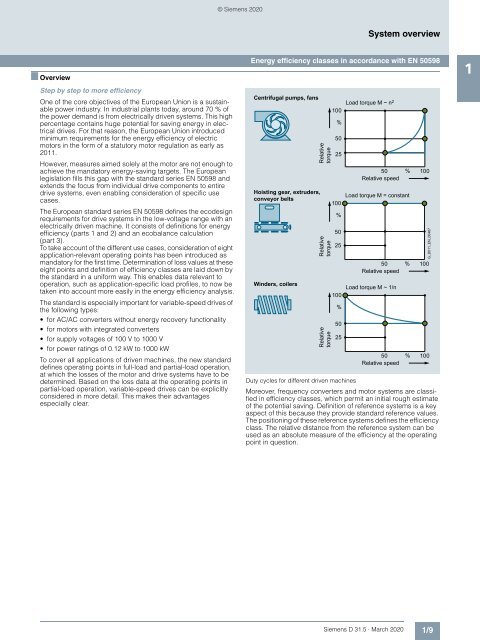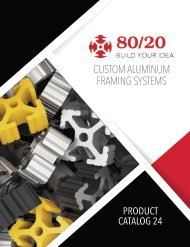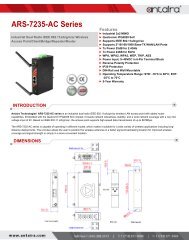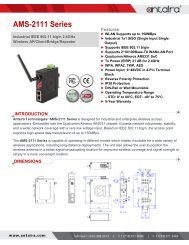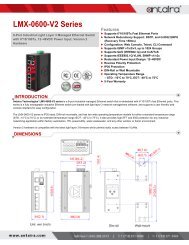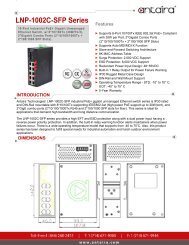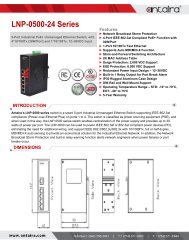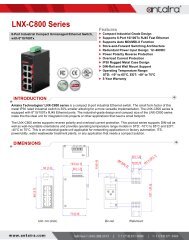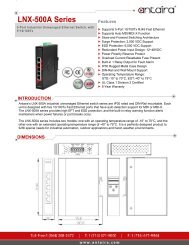motion-control-drives-D31-5-complete-English-2020-03-Update-2020-08
You also want an ePaper? Increase the reach of your titles
YUMPU automatically turns print PDFs into web optimized ePapers that Google loves.
© Siemens <strong>2020</strong><br />
System overview<br />
■ Overview<br />
Step by step to more efficiency<br />
One of the core objectives of the European Union is a sustainable<br />
power industry. In industrial plants today, around 70 % of<br />
the power demand is from electrically driven systems. This high<br />
percentage contains huge potential for saving energy in electrical<br />
<strong>drives</strong>. For that reason, the European Union introduced<br />
minimum requirements for the energy efficiency of electric<br />
motors in the form of a statutory motor regulation as early as<br />
2011.<br />
However, measures aimed solely at the motor are not enough to<br />
achieve the mandatory energy-saving targets. The European<br />
legislation fills this gap with the standard series EN 50598 and<br />
extends the focus from individual drive components to entire<br />
drive systems, even enabling consideration of specific use<br />
cases.<br />
The European standard series EN 50598 defines the ecodesign<br />
requirements for drive systems in the low-voltage range with an<br />
electrically driven machine. It consists of definitions for energy<br />
efficiency (parts 1 and 2) and an ecobalance calculation<br />
(part 3).<br />
To take account of the different use cases, consideration of eight<br />
application-relevant operating points has been introduced as<br />
mandatory for the first time. Determination of loss values at these<br />
eight points and definition of efficiency classes are laid down by<br />
the standard in a uniform way. This enables data relevant to<br />
operation, such as application-specific load profiles, to now be<br />
taken into account more easily in the energy efficiency analysis.<br />
The standard is especially important for variable-speed <strong>drives</strong> of<br />
the following types:<br />
• for AC/AC converters without energy recovery functionality<br />
• for motors with integrated converters<br />
• for supply voltages of 100 V to 1000 V<br />
• for power ratings of 0.12 kW to 1000 kW<br />
To cover all applications of driven machines, the new standard<br />
defines operating points in full-load and partial-load operation,<br />
at which the losses of the motor and drive systems have to be<br />
determined. Based on the loss data at the operating points in<br />
partial-load operation, variable-speed <strong>drives</strong> can be explicitly<br />
considered in more detail. This makes their advantages<br />
especially clear.<br />
Energy efficiency classes in accordance with EN 50598<br />
Centrifugal pumps, fans<br />
Hoisting gear, extruders,<br />
conveyor belts<br />
Winders, coilers<br />
Relative<br />
torque<br />
Relative<br />
torque<br />
Relative<br />
torque<br />
100<br />
%<br />
50<br />
25<br />
100<br />
%<br />
50<br />
25<br />
100<br />
%<br />
50<br />
25<br />
Load torque M ~ n 2<br />
50<br />
Relative speed<br />
50<br />
Relative speed<br />
Duty cycles for different driven machines<br />
Moreover, frequency converters and motor systems are classified<br />
in efficiency classes, which permit an initial rough estimate<br />
of the potential saving. Definition of reference systems is a key<br />
aspect of this because they provide standard reference values.<br />
The positioning of these reference systems defines the efficiency<br />
class. The relative distance from the reference system can be<br />
used as an absolute measure of the efficiency at the operating<br />
point in question.<br />
%<br />
Load torque M = constant<br />
Load torque M ~ 1/n<br />
50<br />
Relative speed<br />
%<br />
%<br />
100<br />
G_D011_EN_00467<br />
100<br />
100<br />
1<br />
Siemens D 31.5 · March <strong>2020</strong><br />
1/9


